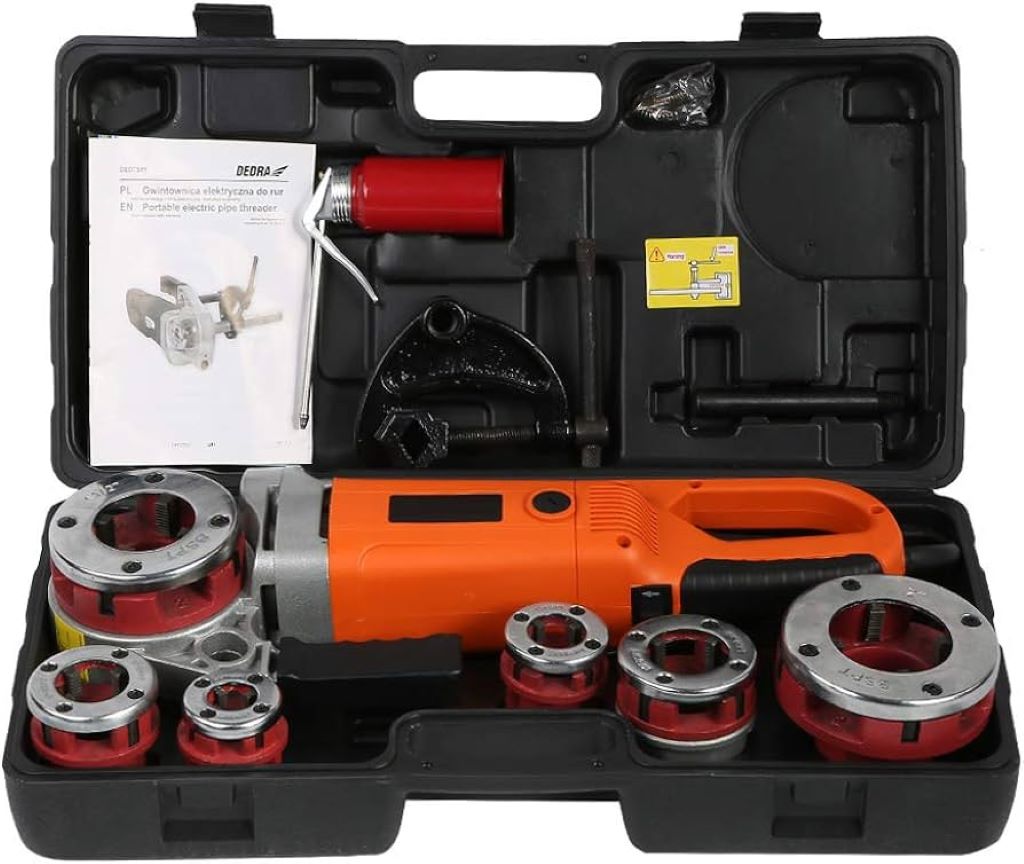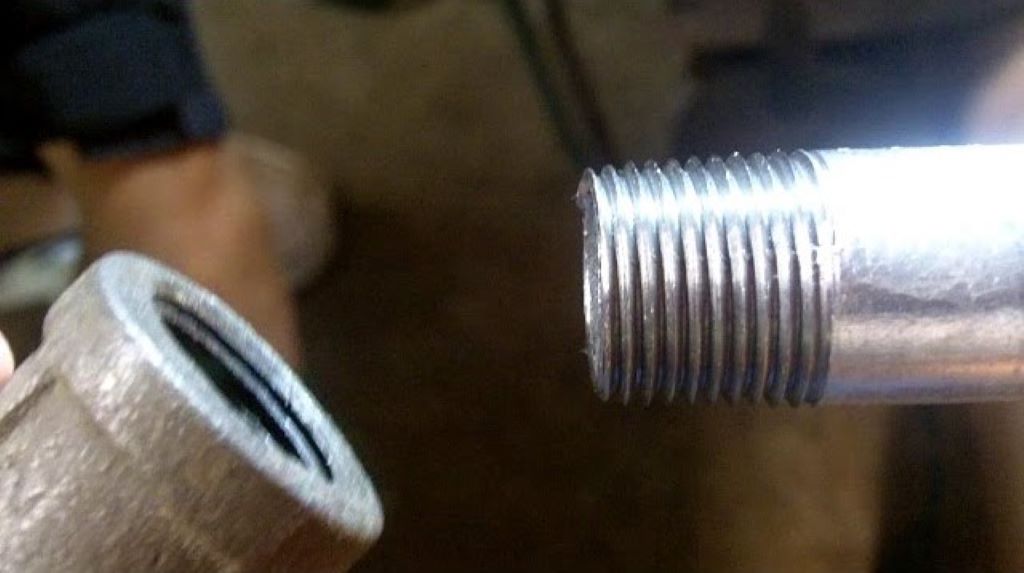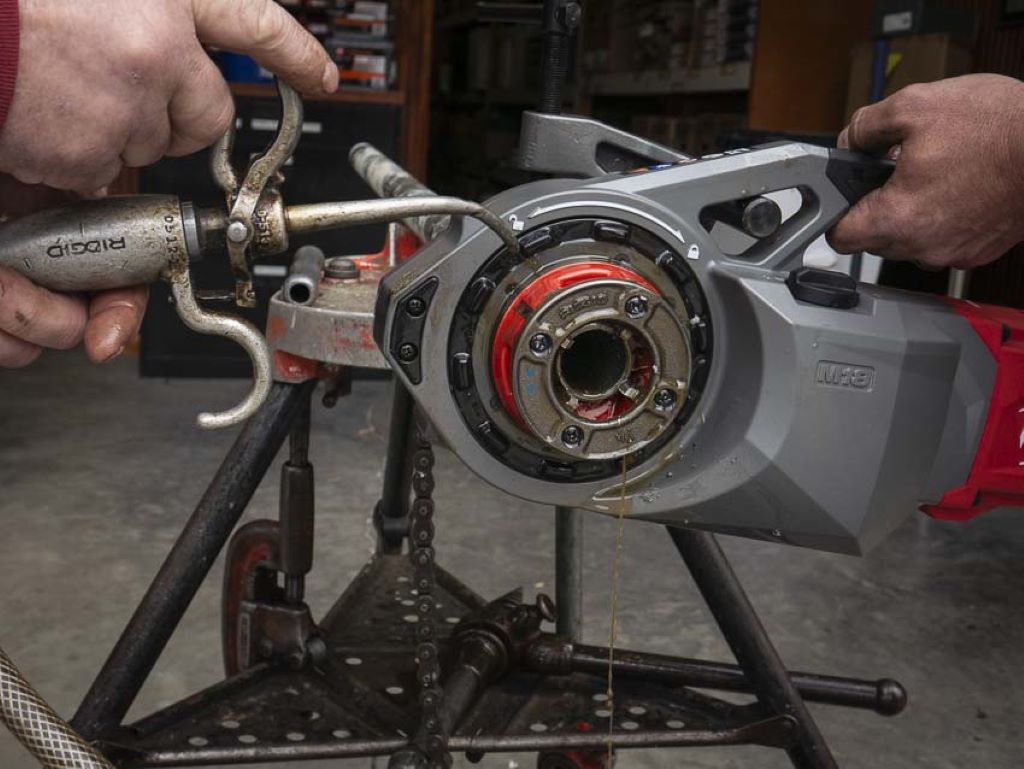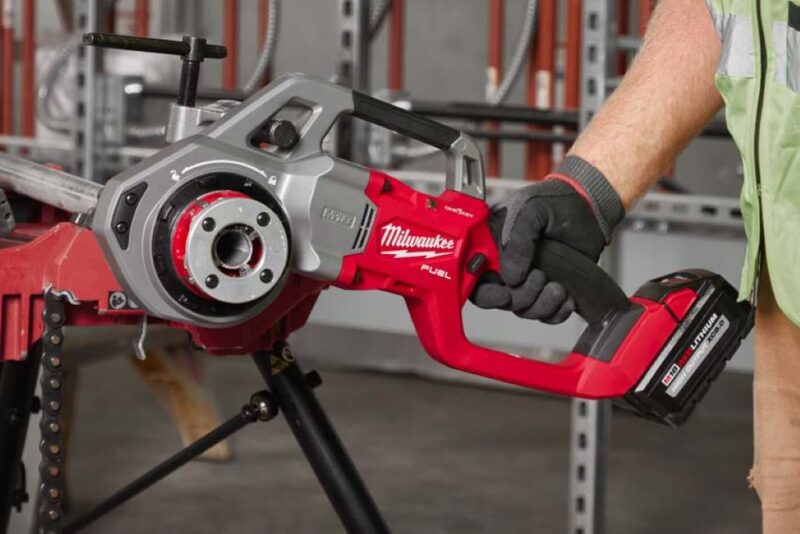A pipe threader is a tool used to cut threads on pipes. Professionals commonly use it for cutting and threading pipes. With the ability to create precise threads, pipe threaders are essential for various plumbing and construction applications. They provide a tight and secure connection between pipes, ensuring leak-free installations.
Introduction To Pipe Threaders
A pipe threader is a valuable tool used in plumbing, construction, and other industries for cutting threads on pipes. It enables the attachment of fittings, valves, and other components, ensuring a secure and leak-proof connection. Pipe threaders come in various types and are essential for any project involving pipes. In this article, we will explore what pipe threaders are used for, the different types available, and the importance of using a pipe threader for any pipe-related work.
What Is A Pipe Threader Used For?

A pipe threader is used to create threads on the ends of pipes. These threads allow pipes to be joined together, creating a secure and tight connection. Pipe threaders are primarily used in plumbing and construction projects where pipe systems are prevalent. They are commonly used in residential and commercial plumbing, as well as in industrial applications where pipes are used for transporting fluids, gases, or even solids.
Types Of Pipe Threaders
There are several types of pipe threaders available, each designed for specific applications. The most common types include:
- Handheld pipe threaders: These are compact and portable threaders that are manually operated. They are suitable for small-scale projects and repairs.
- Ratcheting pipe threaders: These threaders feature a ratchet mechanism, making them easier to handle and providing more precise threading.
- Power pipe threaders: Powered by electricity or compressed air, these threaders are ideal for larger-scale projects that require threading a significant number of pipes quickly and efficiently.
Importance Of Using A Pipe Threader
Using a pipe threader is crucial for several reasons:
- Secure and leak-proof connections: Pipe threaders create threads that ensure a tight and secure connection between pipes and fittings. This minimizes the risk of leaks and enhances the overall reliability of the pipe system.
- Time and cost savings: By using a pipe threader, you can save time and money by efficiently completing pipe-related tasks. Threaded connections are quick to assemble, reducing labor costs and project timelines.
- Versatility: Pipe threaders allow for versatility in pipe system design, as threaded connections can be easily disassembled and reassembled, making modifications and repairs much more manageable.
- Professional results: Using a pipe threader ensures professional-quality threads, meeting industry standards and regulations. This helps maintain the integrity and durability of the pipe system over time.
Overall, a pipe threader is an essential tool for any project that involves pipes, providing secure connections, time and cost savings, versatility, and professional results.
Choosing The Right Pipe Threader
Choosing the right pipe threader is crucial for any plumbing project. Whether you are a professional plumber or a DIY enthusiast, having the right tool can make all the difference in getting the job done efficiently and accurately. In this section, we will discuss the considerations for selecting a pipe threader, popular pipe threader brands, and the differences between manual and electric pipe threaders. Read on to find out which pipe threader is best suited for your needs.
Considerations For Selecting A Pipe Threader

When choosing a pipe threader, there are several factors to consider:
- 1. Size and type of pipes: Determine the size and type of pipes you will be working with. Pipe threaders are designed for specific pipe sizes, so make sure the threader you choose is compatible with the pipes you will be threading.
- 2. Material: Consider the material of the pipes you will be threading. Some pipe threaders are specifically designed for certain materials, such as steel or plastic. Choose a threader that is suitable for the material you will be working with.
- 3. Thread type: Different pipe threaders create different types of threads, such as NPT (National Pipe Taper) or BSP (British Standard Pipe). Make sure the threader you choose can create the desired thread type.
- 4. Versatility: Some pipe threaders come with additional features, such as pipe cutters or vises, which can be handy for various tasks. Consider if you need any additional features and choose a threader that offers the versatility you require.
- 5. Budget: Set a budget for your pipe threader. There are various options available at different price points, so make sure to choose one that fits your budget without compromising on quality.
Popular Pipe Threader Brands
When it comes to pipe threaders, there are several reputable brands to choose from:
| Brand | Price Range |
|---|---|
| RIDGID | $300-$2,000 |
| VEVOR | $100-$300 |
| Rothenberger | $50-$1,000 |
| Harbor Freight Tools | $50-$500 |
These brands have a solid reputation for producing high-quality and reliable pipe threaders that are used by professionals in the industry.
Comparing Manual And Electric Pipe Threaders
There are two main types of pipe threaders available: manual and electric. Here’s a comparison between the two:
- Manual pipe threaders: Manual pipe threaders require physical effort to operate. They are generally more affordable and portable than electric threaders. Manual threaders are suitable for smaller projects or occasional use.
- Electric pipe threaders: Electric pipe threaders are powered by electricity, making them more efficient and less tiring to use. They are ideal for larger projects or frequent use. Electric threaders are generally more expensive and less portable than manual ones.
Consider your project requirements and personal preferences when deciding between a manual or electric pipe threader.
How To Use A Pipe Threader
Learn how to use a pipe threader with this comprehensive guide. From selecting the right tools to cutting and threading pipes, this tutorial will help you become proficient in pipe threading.
A pipe threader is an essential tool for anyone working with pipes. Whether you’re a professional plumber or a DIY enthusiast, knowing how to use a pipe threader can save you time and effort. In this article, we’ll walk you through the step-by-step process of using a pipe threader. From preparing the pipe for threading to executing the threading process, we’ve got you covered.
Preparing The Pipe For Threading
Before you can begin threading a pipe, you need to prepare it properly. Here’s what you need to do:
- Measure and mark the area where you want to thread the pipe.
- Clean the pipe’s surface using a pipe cleaning tool or a wire brush.
- Apply a lubricant or cutting oil to the surface of the pipe to facilitate smooth threading.
Setting Up The Pipe Threader
Once your pipe is prepped, it’s time to set up the pipe threader. Follow these steps:
- Choose the appropriate die head size for the pipe you’re threading.
- Secure the die head onto the pipe threader machine.
- Adjust the die head to align with the marked area on the pipe.
- Tighten the die head securely to ensure a firm grip.
Executing The Threading Process
With your pipe and threader set up, it’s time to start threading. Here’s how you do it:
- Power on the pipe threader machine and set it to the desired threading speed.
- Hold the pipe firmly and position it under the die head.
- Slowly rotate the pipe in a clockwise motion while applying downward pressure.
- Continue rotating the pipe until the threading is complete.
- Once the threading is finished, power off the machine and remove the threaded pipe.
Maintaining And Caring For Your Pipe Threader

Proper maintenance is crucial to ensure the longevity and optimal performance of your pipe threader. Here are a few tips for maintenance and care:
- Regularly clean and lubricate the die heads to prevent rust and ensure smooth threading.
- Inspect the machine for any loose or damaged parts before each use.
- Store the pipe threader in a dry and secure area to prevent damage or theft.
Frequently Asked Questions Of Pipe Threader
What Is A Pipe Threader Used For?
A pipe threader is used to cut threads on the ends of pipes, allowing them to be connected together securely. This tool is essential for plumbing and other applications where pipes need to be joined together.
How Do You Thread A Pipe End?
Pipe threaders are used to cut threads on the ends of pipes, both male and female. They are essential tools for plumbing and pipe fitting purposes.
How Do You Use A Hand Pipe Threader?
Male sides. This allows for easy connection and installation of various plumbing and piping systems.
How Do You Thread A Plastic Pipe?
To thread a plastic pipe, follow these steps: 1. Prepare the pipe by cleaning the ends and removing any burrs. 2. Apply a lubricant to the pipe and the threading tool. 3. Place the pipe in the threading tool and secure it.
4. Rotate the threading tool in a clockwise direction while applying gentle pressure. 5. Continue threading until the desired length is achieved. Remember to use caution and follow all safety guidelines when working with plastic pipes.
Conclusion
Pipe threaders are crucial tools for cutting threads on pipes, ensuring precise and secure attachments for both male and female ends. Whether you’re working on plumbing, construction, or other applications, a pipe threader is a must-have tool in your arsenal.
Curious about the cost of replacing a bathtub? Just as investing in a high-quality pipe threader streamlines the installation process and ensures leak-free results, understanding the expenses involved in replacing a bathtub can help you make informed decisions, ultimately leading to successful projects and satisfied homeowners.

